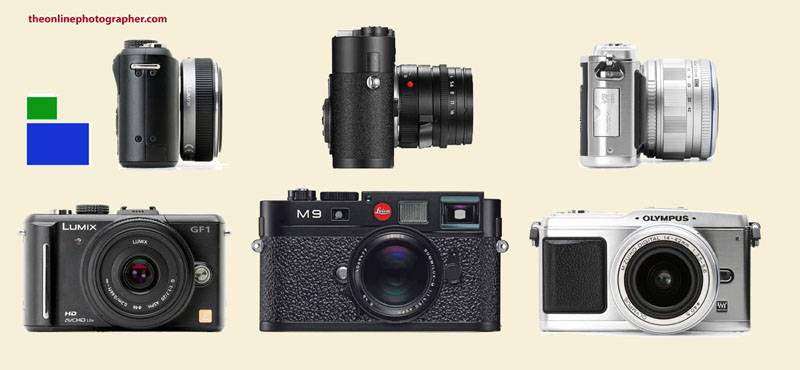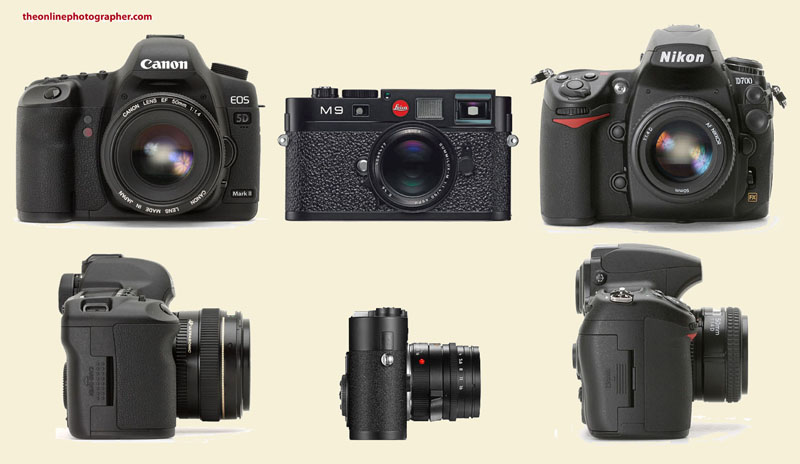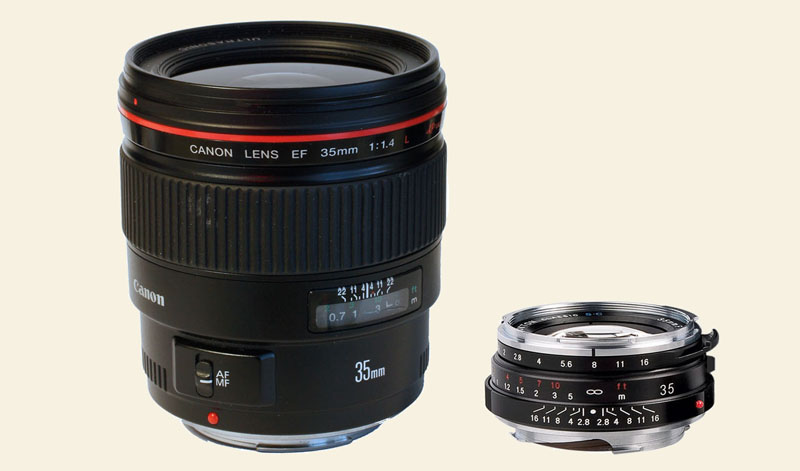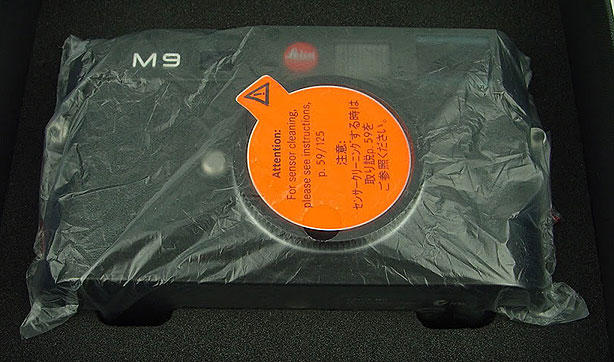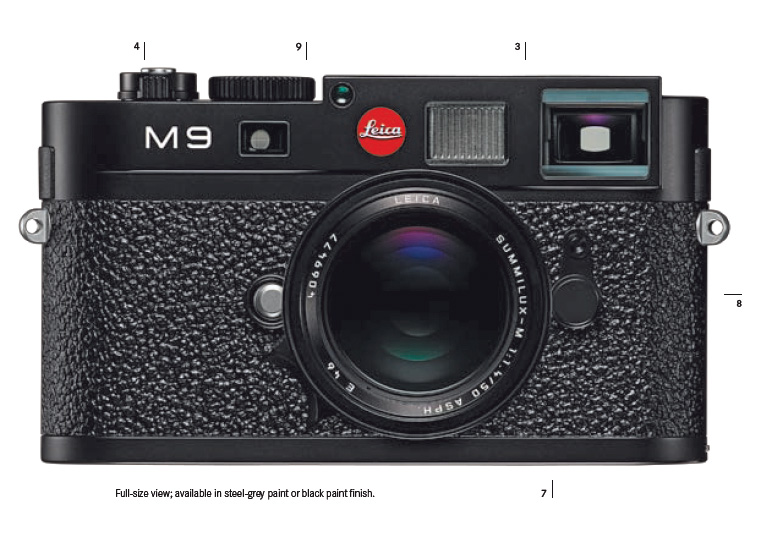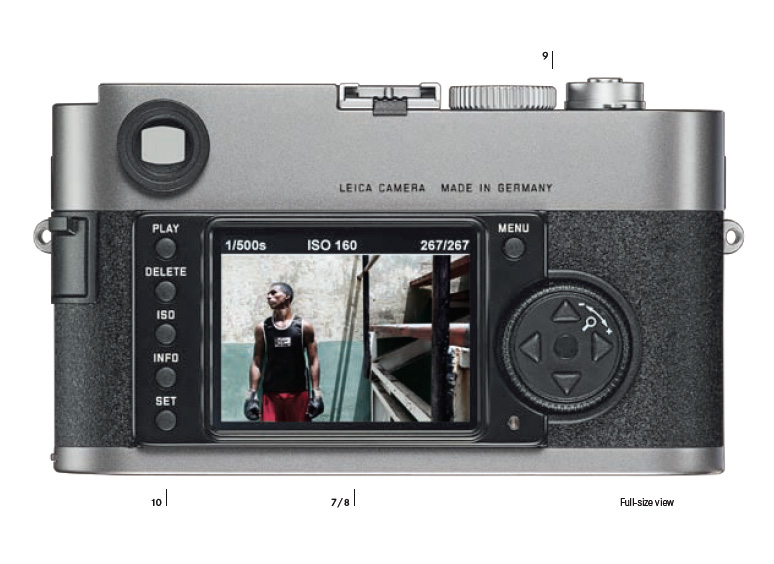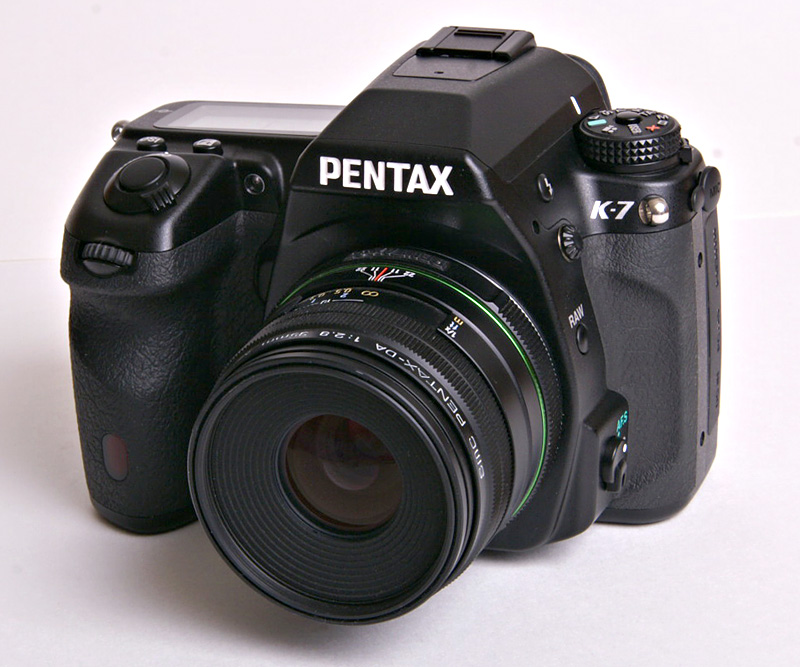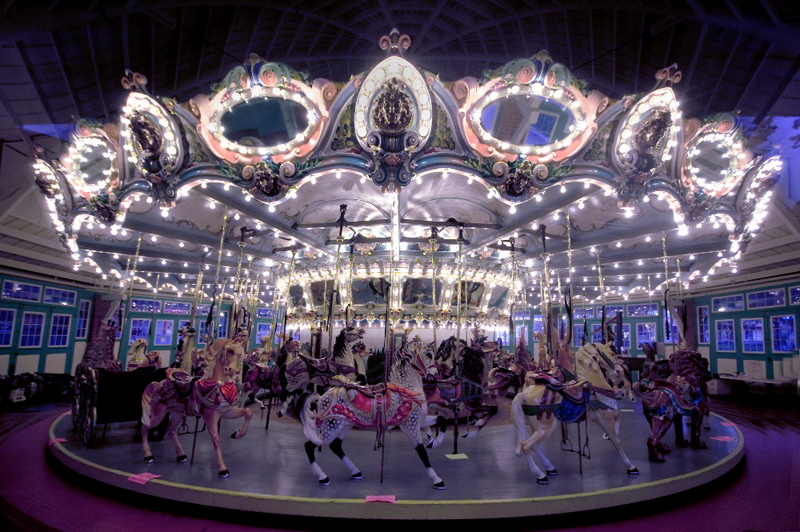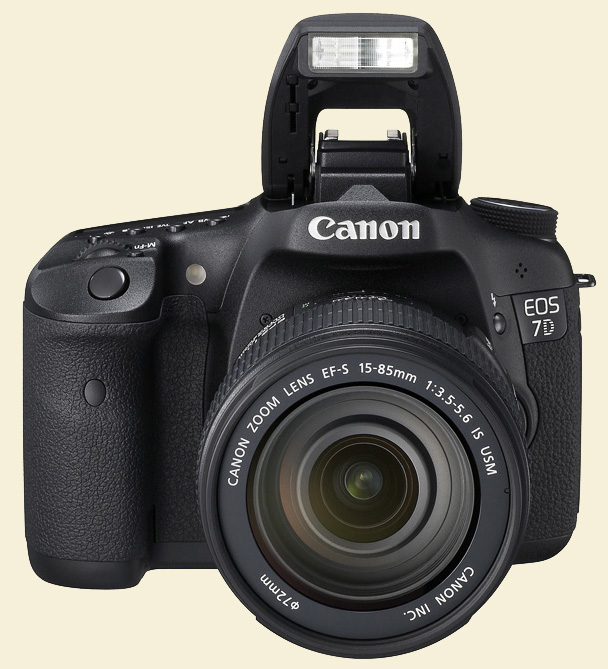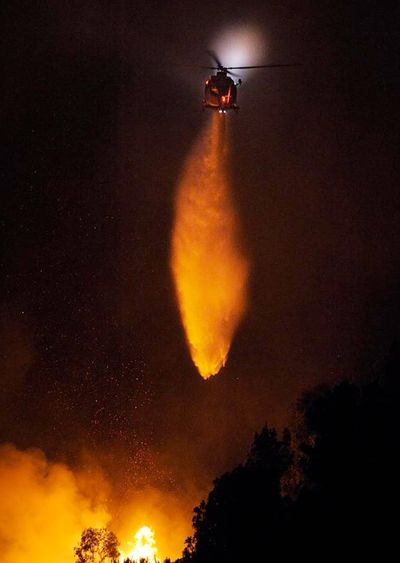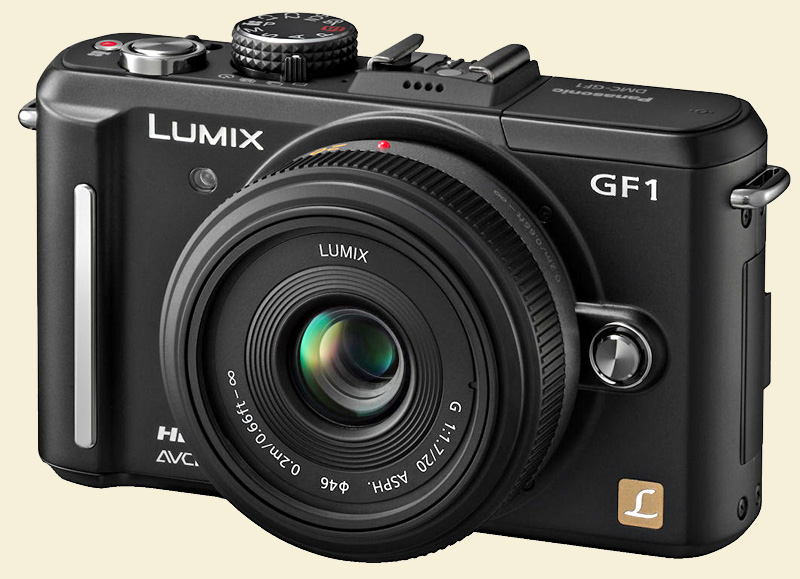
Well now, this is interesting.
I sound like a broken record (pop, tick, hiss), but...
Almost four years ago now—three years and ten months, more precisely—on The Luminous Landscape, I wrote an article called "'DMD': The Digital Camera I’d Like to Own." "DMD" stood for "decisive moment digital," my rather ham-handed attempt to coin a name for what I thought was needed. (I'm not great with names.)
The motivation for it was a lot older than that. Basically, for years I had practiced as a documentary/art photographer* shooting 35mm black-and-white film with SLRs. Intermittently, I had looked for a pocket camera that would give me results similar to what I got from an SLR. The idea was simply that I wanted to be able to show prints of pictures taken with the two cameras side-by-side, without viewers being able to tell the difference.
I never did quite find my pocket camera. The Olympus XA was a companion for a while, but the pictures had too much vignetting; the prints didn't stand up to my SLR prints. Ditto the Contax T2, which I reviewed in Camera & Darkroom magazine, although it came closer.
Well, four years ago now, I got to thinking the same way about digital. What we needed, I thought, was a "digicam" style camera—those handy, eminently portable point-and-shoots—but that yielded picture quality indistinguishable from that of a DSLR.
So, just two days ago, I got to see an Olympus E-P1 for the first time, and then, this morning, the eagerly awaited Panasonic counterpart, the Lumix GF1 , was announced. ("Fauxtokina" continues. Heh.)
, was announced. ("Fauxtokina" continues. Heh.)
The DMD, it seems, is a reality.
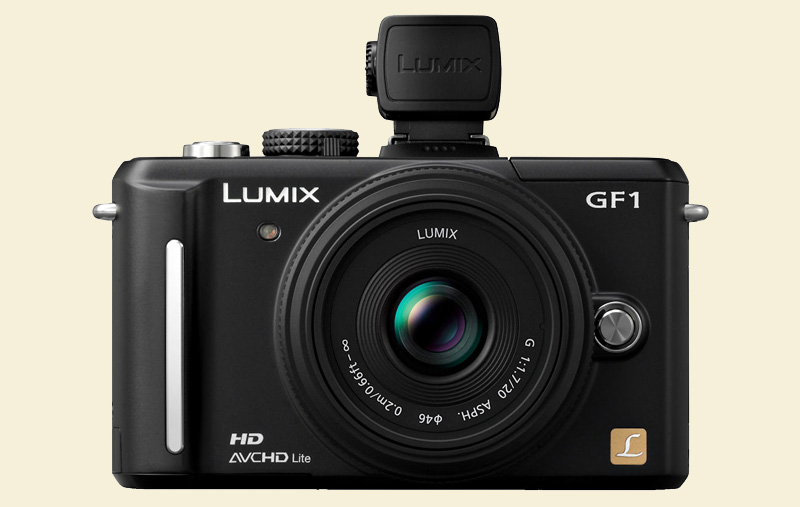
Before I go any further, the GF1 has a viewfinder, for those of you for whom this was the biggest issue about the E-P1: a clip-on EVF, sold separately. The head swivels upwards, too, which should be useful for macro work. (There is a new Leica DG Macro-Elmarit 45mm (90mm-e) ƒ/2.8 ASPH. MEGA O.I.S. lens for the Micro 4/3 system, too. "MEGA O.I.S." means image stabilized.)
With the 20mm lens, you can also use a clip-on optical finder for 40mm lenses like the one from Voigtländer. The aspect ratio is a bit different, but you'd get used to that.
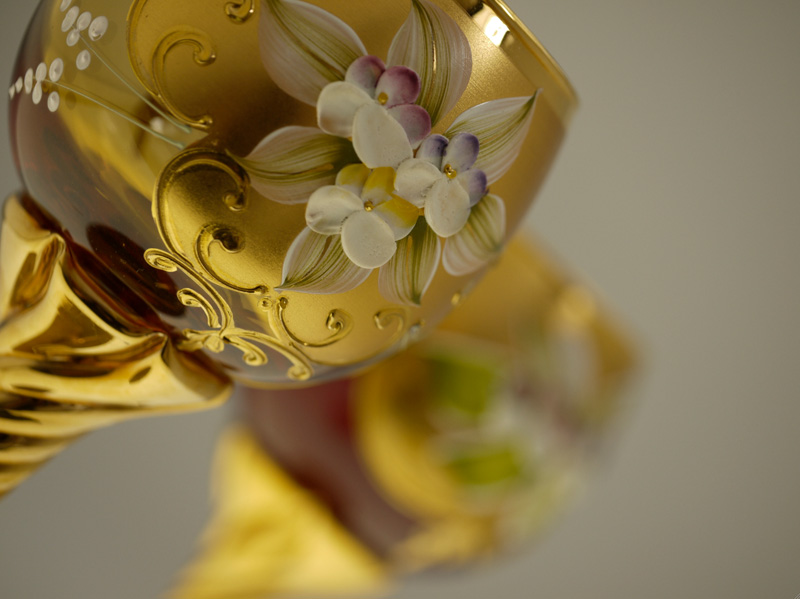 Panasonic's published sample picture from the new Leica 45mm Macro-Elmarit lens
Panasonic's published sample picture from the new Leica 45mm Macro-Elmarit lensI must say I very much liked the E-P1, slowish autofocus and all—it seems to be one of those designs that overcomes its own shortcomings and manages to make a pleasing whole. The odd collapsing zoom lens (the only lens for it Mike Crivello's had) is light and nicely balanced in the hand, and although the AF is on the slow side, the camera pre-focuses nicely and is responsive when shot that way, with a lovely shutter feel and sound. I just looked at the camera in the store, so I can't speak to usage issues or things like the visibility of the viewing screen in broad daylight. But overall I felt the camera was attractive and appealing. It certainly is beautiful, in a way that most digital camera designers have simply given up on.
To that fine start, the similarly-sized GF1 adds some useful distinctions. It does not have body-integral IS, but the AF is expected to be as fast as that of the GH1, which is quite good. It adds video. Although not deliberately precious like the E-P1, it's quite handsome in its own right. There's that EVF available. It has a tiny pop-up flash, which will come in handy if you take insurance snapshots, and there are doubtless some other features I have no interest in. It's a little lighter and a little slimmer than the E-P1 (Panasonic somewhat goofily calls it an "Artistic Flat Design" at the Lumix website.) The GF1 will come in colors—black, metallic red, silver and white. (Colors are popular in the Japanese home market.)
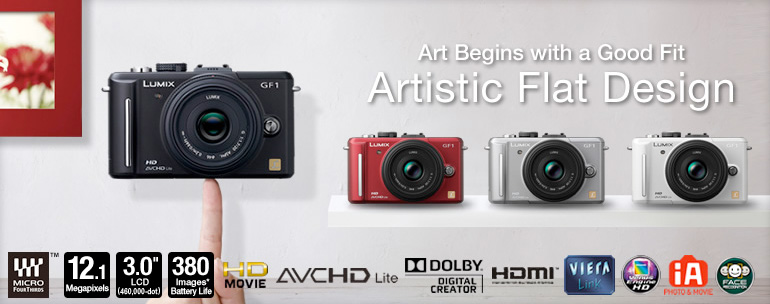
For more on what the camera looks like, Panasonic has posted a 360° view.
For more on its relative size, dpreview has posted a size comparison.
Prices
Of course, these cameras are going to be best suited to complement full-sized 4/3rds systems of one sort or
another.
But both the E-P1 and the new GF1 are pretty expensive cameras—both $900 with their respective normal prime lenses. (The Olympus adds an optical viewfinder, no small expense when sold separately from most makers. Panasonic's EVF will cost extra.) Obviously, $900 is more than the cost of many good entry-level DSLRs, so these are certainly not cheap-out options for anyone wishing to avoid the expense of a "real" camera.
I have little doubt that either Micro 4/3 camera will be satisfying from a "cool gadget" standpoint, offering object appeal and pride of ownership. What I'm not so certain about is how either the E-P1 or GF1 would serve as somebody's only camera, for those who don't have multiples of $900 in their camera budgets. It seems to me that for $900, a camera should be good enough to serve as an only camera, for the buyer who wants to use it that way, rather than a convertible sports car to keep in the garage on weekdays and drive on the weekends, if you will. Only broader and longer-breathed data samples are going to tell us whether they'll serve in that sense.
Lenses
Probably the most appealing thing to me about the Panasonic are its lenses. For years, I did everything with a 35mm and am 85mm on a 35mm SLR, in a ratio of maybe 80/20, respectively, and one of the necessities for me in a camera system is a small, light, portable fast wide-normal lens in the 35mm–42mm focal-length equivalent range. I'm hidebound that way. Most photographers are similarly picky, only with different requirements—their own, whatever those might be.
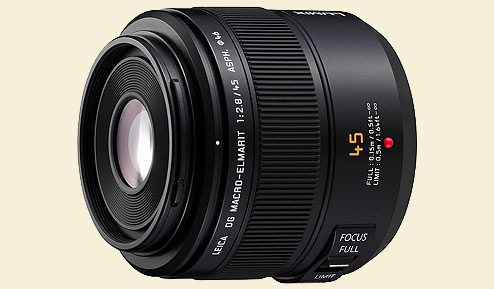
The Oly's 17mm ƒ/2.8 "pancake" for the E-P1 does indeed appeal, but a ~1.3 stop faster 20mm ƒ/1.7 (pictured on the camera in the top two illustrations) appeals even more. Add to that the Leica 90mm-e—it looks hulking here, but it's only two and a half inches long and weighs only 8 oz. (225 g)—that you can use for head-and-shoulders portraits and closeup purposes, and you've got a fine, versatile pair.
(pictured on the camera in the top two illustrations) appeals even more. Add to that the Leica 90mm-e—it looks hulking here, but it's only two and a half inches long and weighs only 8 oz. (225 g)—that you can use for head-and-shoulders portraits and closeup purposes, and you've got a fine, versatile pair.
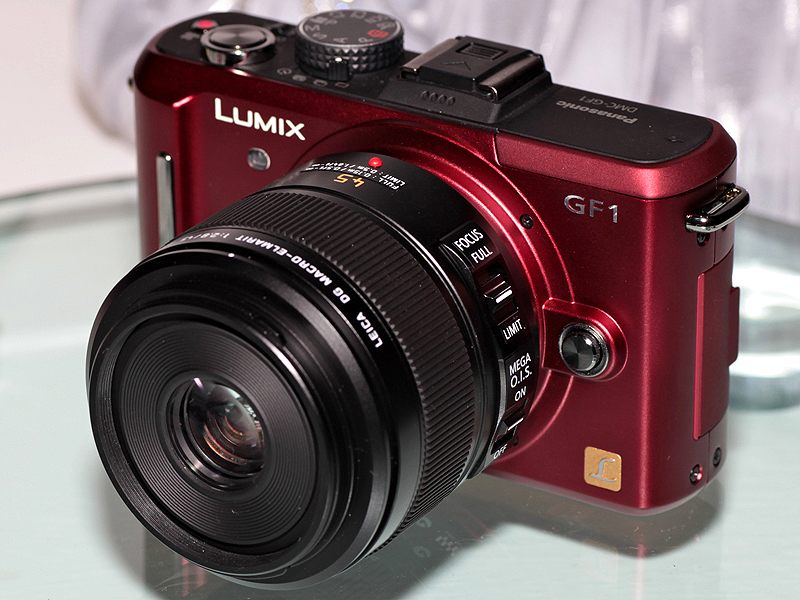 Red GF1 with the Leica 90mm-e Macro mounted. Photo from dc.watch.impress.co.jp.
Red GF1 with the Leica 90mm-e Macro mounted. Photo from dc.watch.impress.co.jp.
On the Panasonic lens roadmap for 2010 are a 100–300mm ƒ/4–5.6 O.I.S., 8mm ƒ/3.5 fisheye, and 14mm ƒ/2.8 prime WA. That sets out a roadmap in my mind, too—if it were me, I'd get the camera with the 20mm first, then add the Macro-Elmarit, and then add the 14mm WA when it arrives next year. Perfect.
Of course there are zooms available too, for those who insist. And don't forget the adapters that allow you to use standard 4/3 lenses, as well as Leica M-mount lenses.
All in all a particularly tasty introduction today, from Panasonic. I have a GF1 on the way as soon as they ship, a temporary loan from a kind reader, and I'm looking forward to learning more about it.
Mike
*What this means is that I'd spend most of my days wandering around town shooting whatever I felt like. It's the life.
Send this post to a friend
Featured Comment by Juze: "WANT! WAAAAAANT!
"What I want even more is an EP-2 with AF that's as fast as Panny's and that in-body IS. And then that delicious pancake becomes a stabilized ƒ/1.7. Oooh, delicious.
"But a GF1 with the pancake is fine as well. (Hear that, Santa?)"
Featured Comment by Catherine: "Uh oh, guys, don't get your boxers in too much of a twist just yet...it looks like Panasonic is marketing the GF1 to us CHICKS!
"Excuse me...I mean, us "spirited women."
"Yay for us! Go, female team!
"Oh no! Along comes the DMD at last, and it's meant to be a CHICK-CAM?! Better keep looking at those manly-beast cameras that Canon and Nikon keep pumping out, for now, just to be on the safe side.
"You have to love marketing. I wanted one before I even knew I was supposed to!"
Mike replies: I must be in good touch with my anima—I usually like cameras the Japanese target at females. I loved the Contax Aria, a decade ago, and that was intended to be Contax's "lady camera." (I even included a paragraph about that in my review of the Aria in Photo Techniques.)
